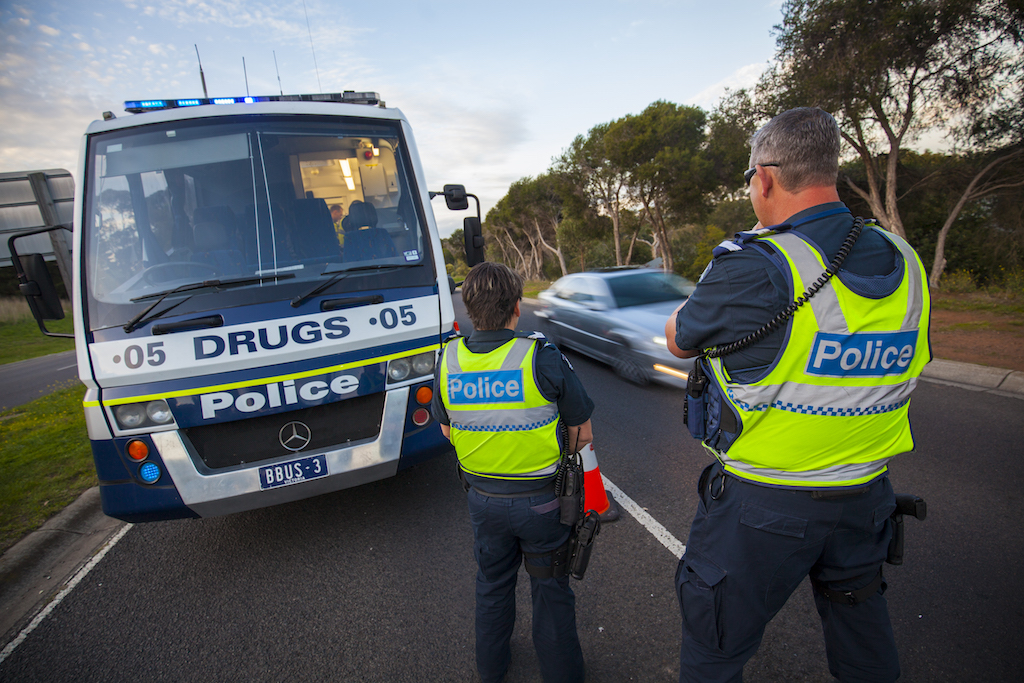NSW Police Are Using A Secret Algorithm To Target Children Who Might Commit A Future Crime
Children as young as 11 are being targeted.

A NSW Police intelligence program that uses secret algorithms to identify suspects who may commit a “future crime” is disproportionately targeting young people and Aboriginal and Torres Strait Islander people, according to a comprehensive new report.
The ‘Policing Young People in NSW’ report was published by the Youth Justice Coalition, a network of youth workers, lawyers, academics and policy experts. It was written by Dr Vicki Sentas, an academic at the University of New South Wales, and Camilla Pandolfni, a solicitor at the Public Interest Advocacy Centre.
The report is the first comprehensive look at the Suspect Targeting Management Plan (STMP), a NSW Police program that “seeks to prevent future offending by targeting repeat offenders and people police believe are likely to commit future crime”.
What Is The STMP?
The STMP involves the use of “risk assessment tools” and algorithms that take into account a series of “risk factors” to identify potential future criminals. Suspects in the program are categorised on a scale from “low risk” to “extreme risk” and then targeted by police officers through regular house visits and the use of stop and search powers.
The criteria used to identify suspects is not publicly available, and individuals targeted through the STMP are not notified of the reasons behind their risk categorisation. The whole program is managed internally by the police and there are no specific laws or regulations governing its operation.
The Youth Justice Coalition study found that in 2015 more than 200 people were subject to an STMP, and nearly half of them were people under the age of 25. The youngest STMP target was 11 years old.
Forty-four percent of STMP targets were identified as Aboriginal. According to the most recent census, only 3.3 percent of the Australia population identifies as Aboriginal or Torres Strait Islander. The Redfern Local Area Command had the highest number of STMP targets, with 45 individuals. Sixty percent of the Redfern targets were Aboriginal.
What’s It Like To Be An STMP Target?
The report also provides a number of real-life case studies of how the STMP operates in practice. In one example, police records showed a 16-year-old targeted by the STMP was stopped and searched by police 23 times in the space of 10 months. The teenager was stopped at train stations, on the train and while they were walking down the street.
Police records also provided some of the reasons used to justify these kinds of random searches, including that “young people who get on the last carriage of a train and wear Nautica are known to commit criminal damage”.
According to the report’s authors, this kind of sustained harassment of young people by the police “can contribute to their offending patterns” and leads to a feeling amongst STMP targets they are being targeted because of their race.
So What’s The Solution?
The report recommends that police stop using the STMP on children under the age of 18. Instead, the authors argue, children who are suspected of being at risk of reoffending should be placed in prevention programs that tackle the root cause of their offences, like Youth on Track and Police Citizens Youth Clubs.
They authors have also called on the police to make the full policy and operating procedure underpinning the STMP available to the public to improve transparency and accountability.
“There is no publicly available evaluation or evidence that the STMP actually prevents or reduces crime,” report co-author, Camilla Pandolfini, said.
“This type of heavy-handed proactive policing is very damaging to the relationship between young people and the police and we believe it undermines key objectives of the NSW justice system, including diversion, rehabilitation and therapeutic justice,” said Dr Vicki Sentas.
“We know that ‘tough on crime’ approaches to policing young people engender fear in communities, diminish trust in the police and delegitimise police actions. They also fail to address any of the underlying causes of youth crime and stigmatise and marginalise vulnerable individuals and communities.”
In a statement provided to Junkee the NSW Police said “The Suspect Target Management Plan (STMP) is a framework which targets recidivist criminal offenders, regardless of age, to prevent them from committing crimes and disrupt their capability to commit crime. A thorough risk management framework is used to ensure the NSW Police Force is targeting the right people at the right times to reduce violence and crime in the community.
“On all occasions, the STMP undergoes a quality assurance process by a senior police officer to ensure the validity of the process. While deliberately engaged by police, STMP nominees are treated with respect and tolerance, but they are reminded that the community will not tolerate criminal behaviour.”
